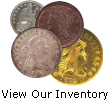The following was written by Christy.
Greetings from my remote shipping department. In the Before Times, even with a small crew here at Northeast, there was never a dull moment. Between the ever-present game of What- is-Brian-Eating, or keeping a running tally of every time Tom says “Tom,” and trying to decode my cryptic emails, it was always bustling and busy with orders to get shipped out. These days I do as much as I can remotely, and believe me, my bosses have tried really hard to make this possible for me. Sometimes we have to get creative and I have to write a blog post. These are truly tough times, people.
Working at home is just as strange as it is interesting, though. Instead of getting sidetracked by office banter, I now find myself chasing after my dog at a moment’s notice because he got into the laundry again. Have you ever tried working from home with a high-energy dog? They don’t like losing your attention. He’s learned about four new tricks ever since I started working from home, so I guess you can say he also puts in a good shift every day.
As the saying goes, you don’t know what you got ‘til it’s gone. I didn’t realize how much of the little things in the office I would miss until I wasn’t in there with the rest of the team. Running jokes just aren’t the same through messenger, and now it’s so quiet I’ve started responding to myself when I think out loud just to fill the silence. There are some perks to working from home though. Namely, I have access to my air fryer. My questionable wardrobe choices aren’t subject to the judgment of my peers, and I’m now testing the boundaries of how much coffee is too much coffee. I’ve also discovered just how much wildlife lives in the woods outside of my home. I didn’t know we had turkeys!
Throughout all of this, I am happy that we’ve managed to go through the changes that keep us safe and healthy, as well as busy! We hope you are all doing the same and finding creative ways to keep yourselves busy. Feel free to comment on this blog and share with us what you've been doing during all of this.
I now turn the conversation to my favorite subject: food!
There’s no doubt that you’ve been curious from time to time just what exactly it is that we eat at these coin shows. “What does Brian eat?” has unquestionably been a nagging question for you readers. Well, I’m hoping I can answer this burning question and any others you may have.
Breakfast is relatively easy as many options are available either inside the hotel or on the walk to the convention center. However, getting in meals at these convention centers, let alone nutritious meals, can be quite the daunting challenge. We try to let the trade show coordinators know that those little snack packs that are included on our table at some shows...well, sometimes that is lunch for three people, so keep ‘em coming. When it is crazy busy, we don't often have time to pick up a lunch, never mind eat it. With the shows going sometimes until 8:00 PM, this can be a long time going without sustenance. Insert pitiful violin music
While there are indeed other 'options' available at coin shows (many of them which are chosen much to my astonishment by throngs of people), it seems better for you (and the environment for that matter) to not eat at all. I’ll bet a Nathaniel’s foot long is great if you’re on Coney Island or at a BBQ at home, but the ones that roll around on those hot grease-laden tubes for days on end make me want to start a Dalai Lama-style fasting on the double.
Perhaps the biggest challenge faced at some convention centers is a policy of not allowing outside food or drink onto the bourse floor. While I have never seen the drink rule enforced*, I (and many others) certainly have been stopped trying to bring in boxes of food, which apparently, is a major crime. Let’s take a look at some of the major criminals of our time:
1) Al “Scarface” Capone - tax evasion (some hint that he was involved in other unlawful activities as well)
2) Ted “The Unibomber” Kaczynski – responsible for more than a dozen terrorist bomb attacks that killed three people and injured 23 others
3) Brian “The Mule” Alty – apprehended carrying unlawful and possibly nutritious contraband into known convention centers with intent to consume/distribute.
Now, there is a way around this (do not try this at home): one can simply get an unmarked bag large enough to put the illegal lunch items in and stroll right past security (think Andy Dufresne from the Shawshank Redemption walking into the Bank of Portland to withdraw the warden’s money). I can’t help but feel a little like Jason Bourne steadfastly avoiding the convention center Polizei. “They can’t search the bags without a warrant” I remind myself as I smugly traipse through their thin line of defense and across the goalmouth of the Bourse floor to victory!!!
I then deliver the goods to the fine people at Northeast Numismatics (and sometimes Bill Shamhart).
So, this ended up being a teaser. Tune in next time and I’ll regale you all with what and how we eat at these shows (and even at our office). It’ll be sure to put a smile on your face.
For now, be well, be safe, be informed and try to help others!
*I defy anyone including weapon-toting law enforcement to take away my morning cold brew iced coffee (two creams, no sugar if you’re buying next time). They would have to pry it from my cold, dead hands. Think Michael Douglas/Falling Down on steroids.
The following was written by Brian.
I miss the road. There, I said it.
We’re already (or should I say only?) two coin shows down due to COVID-19 and we’re not out of the woods yet. This could be the summer that wasn’t.
Before this whole mess started, it was a fairly grueling road schedule; Winter Fun in Orlando, St. Louis Show, Mid America Show in Illinois, followed by Long Beach Expo, followed a couple days later by the ANA in Atlanta. For this very busy January/February schedule we *should* have been rewarded with the Whitman Expo in Baltimore followed by Central States. Those two shows, as you may well know, have been cancelled. If the Summer Fun and Whitman Shows are cancelled (not to mention the many smaller shows we attend in between), we are talking half a year worth of shows cancelled. And I already miss it.
I miss getting up earlier than usual and going to work and then going straight to the airport and straight to the hotel and straight to bed and then waking up and going straight to the show for 10 or 11 hours - lather, rinse, repeat for 5 days. I actually miss that.
I’m the guy at Northeast that hits the bourse floor with suitcases full of great coins to sell while Chris and Tom are busy manning the table and buying as much as possible. I miss the rush of selling a bunch of coins to someone I didn’t expect to sell any. I miss the thrill of finding that new dealer and forming a relationship in which the potential for years of business will develop. I miss skipping lunch* to hit as many tables as I can. I miss the camaraderie, the laughs and the stories of all my dealer friends, many of whom I can truly call good friends.
I miss seeing fresh material and interesting coins for 10 hours a day. It’s funny, I am told by collectors (with other vocations) that I am lucky to be able to go to all these shows and see so many great coins. To that I say, you’re right! I am lucky! And I miss it.
I miss collectors coming up to our table with their ‘1943 copper cent’ asking us to verify its authenticity**. I miss getting room service instead of going out somewhere nice all because I’m too tired from the long show***.
Joking aside, this challenging time certainly puts a lot into perspective and one thing I know for sure - I am lucky to do what I do. I sure do miss the shows and I can’t wait to get back to it.
* I don’t miss this at all.
** I don’t miss this at all.
*** I don’t miss this at all
Brian, You've written an unusually effective piece. Many of us out here can relate.
Greetings everyone. I sincerely hope every one of you is safe, healthy and getting through this mess with as little hardship/inconvenience as possible.
And as little *boredom* as possible.
Me? I'm the furthest thing from bored right now. There's always plenty to do at Northeast even if we're not in the building, so hopefully I can alleviate some of your boredom with a Northeast-style 'day in the life' of the sales director.
I've been filling my days with a boatload of social media, customer correspondence, dealer networking and washing my hands. I could fill literally months’ worth of posts, whether on Instagram (@nencoin) or Facebook (www.facebook.com/northeastcoin) alone. Please follow us on both if you're not already! Thanks to a robust inventory, it would take years for me to run out of items to talk about and showcase. And though I'm quite busy with all of this, I welcome your input as to what you think an online coin company can be doing ITCT.
Perhaps more interesting than the above work/task tidbits is how it all plays out in a work from home (from here out 'WFH') environment. First off, setting work/home life boundaries when WFH is easier said than done. Pre-COVID, I would typically rise each morning early due to a fairly long but not unreasonable commute. Now, I get up and immediately start in on what I didn't finish the night before (which went much later than a 'normal' workday because I had no commute home and I'm not going anywhere anyway any time soon). We're on week two of the state-mandated lockdown and already days are blending from one to the next, but it's not all that bad because I'm pretty sure it's Friday. My guess is that by the time I have a solid WFH daily routine/schedule, it'll be time to go back to the office (God-willin' and the creek don't rise!), but it's a fluid situation and we shall see.
Secondly, it has occurred to me that some things that naturally occur at the office don't necessarily translate to WFH; for instance, drinking plenty of water throughout the day. Hearing our "bubbler" (as we New Englanders like to call it) or water cooler (as everyone else in the country calls it) elicits a Pavlovian-type response to get up and go refill many times throughout the day, but the absence of that at home results in having to set reminders throughout the day to drink more water or else become dehydrated. It's a fluid situation. : )
There are many other relatively minor concessions that are made in the WFH environment (to go along with, admittedly, decided advantages), and though I'm not quite ready to pull out what little hair I have left, I will concede that separate work and life spaces is probably for the best. I'm already welcoming a return to the office and seeing my mates and looking at actual coins again!
Until next time, remember, we're all in this together, separately, in these challenging times.
Brian Alty
Director of Sales

You are not the only place that calls it a bubbler. Here in Wisconsin it is also known as a bubbler and some of the best pizza around can be found at a bar in Bay View (within the city of Milwaukee) called "The Bubbler".
We stand corrected! Perhaps we should have said that here in New England, or at least in the Boston area, we call it the Bubblah. R's don't always flow off the tongue here. : )
The following was written by Tom.
We returned this past weekend from the 56th Annual Greater American Coin Fair in St. Louis, MO. This show, which is one of our favorites, takes place directly across from the airport, which is about a 3-minute shuttle ride.
The word vintage comes to mind when considering how best to describe this show, as it is held in a 19th century Hilton Hotel with its walls and corridors adorned with old framed TWA posters of stars from another era; stars such as Marilyn Monroe, Cary Grant, Bob Hope and other lesser knowns. They are shown departing on TWA flights when the airline first flew into St Louis in the early 1960’s.
St. Louis is one of those shows that gets a good mix of regional and national dealers who can easily fly in for a quick visit and fly home. It’s also a hot spot for collectors (who have been known to drive for several hours) with money burning a hole in their pockets to buy for specific needs, or with product ready to sell to eager buyers. Few are just browsers, but all participants seem to have the same goal in mind.
We always see many of our faithful customers; often those who primarily see our inventory online and are now getting a first-hand look. We also tend to meet new clients anxious to do business. We can thank Mike Orlando for many of these new customers. Mike has managed this show for decades, doing an excellent job with his friendly coin club volunteers.
While we fully appreciate what this show has to offer, there is one minor downside. The Greater American Coin Fair has (easily) the most cramped aisles of any show we regularly attend. Never fear though, each table comes faithfully stocked with a jar of Vaseline, a can opener, and the jaws of life to get in and out of the booths.
The Fair takes place in two small rooms, with the bourse floor right off the lobby. A narrow back up table is shared with the dealer behind us and our table is in the middle of a row. If either of us wants to get out, we have upwards of ten people to slink past as we make our way down to the end of the row. Brian and I, however, figured out a better way. Turns out, crawling under the table to get in or out of the booth is much mor efficient, which we proved about two dozen times. Still, this show remains one of our favorites with its down home, friendly feel. We look forward to it every year and this year was no exception.
From the get-go, dealers packed the room and trading began immediately. In this type of atmosphere, it is much more likely that dealers will come to your table to buy your coins, rather than waiting for you to come to them. The general public traffic over the next couple days was robust and it was very nice to put faces to names with some of the customers and smaller dealers that we have been working with recently.
Overall, we were happy with the retail business we did and for the opportunity to buy fresh, different material that we sometimes don't see at the usual major shows we attend (i.e.., Baltimore, Long Beach, ANA). We have been busy this week listing our new purchases from the show.
On Friday night, with a hankering for Indian food, Brian and I took a shot at a little place called Gokul, as it had many positive reviews. From this point forward, I'll never forget that Gokul is located in "The Delmar Loop" area of St. Louis, as our Uber driver mentioned this fact upwards of 57 times. Upon arrival at the restaurant, Brian spotted this sign on the window. I was delighted; Brian not so much. Still, it was very good (editor’s note: so says Tom).

There were far too many St. Louis Blues hockey jerseys and way too much Kansas City Chiefs gear (Kansas City, Missouri, that is). Being sports fans in New England, we’ve been pretty spoiled, so it was a tad painful to see all of the constant reminders of the teams that bested us these past hockey and football seasons. But we dealt with it alright and are certainly looking forward to attending this show again.




